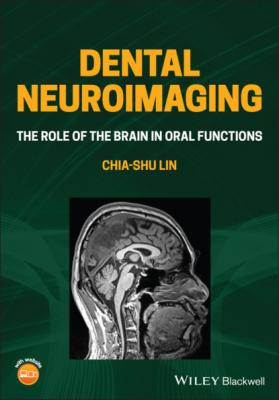ТОП просматриваемых книг сайта:
Dental Neuroimaging. Chia-shu Lin
Читать онлайн.Название Dental Neuroimaging
Год выпуска 0
isbn 9781119724230
Автор произведения Chia-shu Lin
Жанр Медицина
Издательство John Wiley & Sons Limited
1.2.2 What Is the Role of Neuroimaging Research in Dentistry
1.2.2.1 Trends of Research Publications in Dental Neuroimaging Research
Table 1.1 summarizes the number of dental research publications combined with research on the brain and neuroimaging, according to a PubMed‐based survey. The trend of publication of dental research related to neuroimaging was strikingly similar to that related to the brain. Before 1970, only a few publications were found in these fields. In contrast, after the 1990s, the percentage of these studies showed a pronounced increase. Notably, this trend in publication can be compared with the dental research related to neuroscience in general, as recently reported by Iwata and Sessle (2019). In terms of brain and neuroimaging research, almost half of the dental research on brain and neuroimaging was published last decade (2011–2020) (Table 1.1). This trend is very different from the general field of neuroscience. It is also noteworthy that more than 90% of the dental research on neuroimaging was published after the mid‐1990s, about the same time when functional magnetic resonance imaging (fMRI) came into practice (Bandettini 2012). The trend reflects that technological innovation of biomedical imaging may facilitate cross‐disciplinary research on dentistry and the brain.
Table 1.1 Trends of the academic publicationa in dental research related to brain and neuroimaging.
| Period | Dentistry + Brain | Dentistry + Neuroimaging | ||
|---|---|---|---|---|
| No. of articles | Percentage | No. of articles | Percentage | |
| 2011–2020 | 10004 | 49 | 391 | 65 |
| 2001–2010 | 5119 | 25 | 152 | 25 |
| 1991–2000 | 2773 | 14 | 61 | 10 |
| 1981–1990 | 1719 | 8 | 2 | 0 |
| 1971–1980 | 631 | 3 | 0 | 0 |
| 1961–1970 | 145 | 1 | 0 | 0 |
| 1951–1960 | 53 | 0 | 0 | 0 |
| before 1951 | 11 | 0 | 0 | 0 |
a The number of articles was surveyed using PubMed with the following combination of keywords: ‘tooth[mesh] OR oral[mesh] OR dental[mesh] OR dentistry[mesh] OR teeth[tiab] OR tooth[tiab] OR oral[tiab] OR dental[tiab] OR dentistry[tiab]’ in conjunction with ‘brain[tiab]’ and ‘neuroimaging[tiab]’ for ‘Dentistry + Brain’ and ‘Dentistry + Neuroimaging’, respectively.
1.2.2.2 The ‘Landmark Discoveries or Concepts’: Past and Future
In their article ‘The Evolution of Neuroscience as a Research Field Relevant to Dentistry’ for the Journal of Dental Research (JDR) Centennial Series, Iwata and Sessle enlisted several achievements of orofacial neuroscience in the decades (Iwata and Sessle 2019). Many of these achievements have been made based on clinical, animal and laboratory research. For example, the gate control theory has been widely investigated from the clinical to the molecular levels. Remarkably, animal research has unravelled a complex pattern of bi‐directional projections between the stomatognathic system to the brain (Figure 1.2). Investigation of the human brain may disclose more insights on this topic. While the ‘gating’ mechanism at the spinal level has been gradually elucidated, how the nociceptive processing is translated to pain, a subjective experience, has remained a challenging issue. As noted in Chapter 6, neuroimaging methods may help extend our current knowledge in pain and its management. Another example is the investigation of neural mechanisms of mastication and swallowing, which significantly impact our understanding of oral physiology and the management of oral dysfunctions. Recent neuroimaging findings, on the one hand, confirm the evidence from animal research (e.g. the role of primary sensorimotor cortices in chewing) (Table 1.2 and Figure 1.2). On the other hand, neuroimaging findings disclose new knowledge about the role of learning and cognitive control in oral motor functions (Table 1.3). As shown in Table 1.2, many examples reveal how neuroimaging, as an exploratory tool, broadens the frontier of orofacial neuroscience into the uncharted area.
1.2.3 Methods of Neuroimaging
As an approach to visualize the central nervous system (CNS), neuroimaging consists of various methods to image the brain. The methods can be generally categorized by the degree of invasiveness, by the brain features to be quantified (e.g. brain structure or functions), and by the signals to be detected (e.g. neural activity or cerebral flow). A brief introduction of the methods is summarized in the following sections, and more detailed mechanisms are discussed in Chapter 2.
1.2.3.1 Invasive Methods of Neuroimaging
It would be contradictory to talk about an invasive imaging method if we strictly define neuroimaging as a non‐invasive approach. However, some invasive approaches have provided crucial conceptual advancement in neuroimaging. For example, in electrocorticography (ECoG), experimenters detect brain signals using a meshwork that consists of multiple electrodes. This meshwork is overlaid on the dura of the brain, and therefore, the response of the electrodes at different positions can be (though roughly) mapped to the anatomical region of the brain (Gazzaniga et al. 2019). The method was limited to patients who received brain surgery. ECoG reveals the feasibility of brain mapping, i.e. to map the association between the geometric features of the brain and mental functions, a fundamental element of modern neuroimaging.

